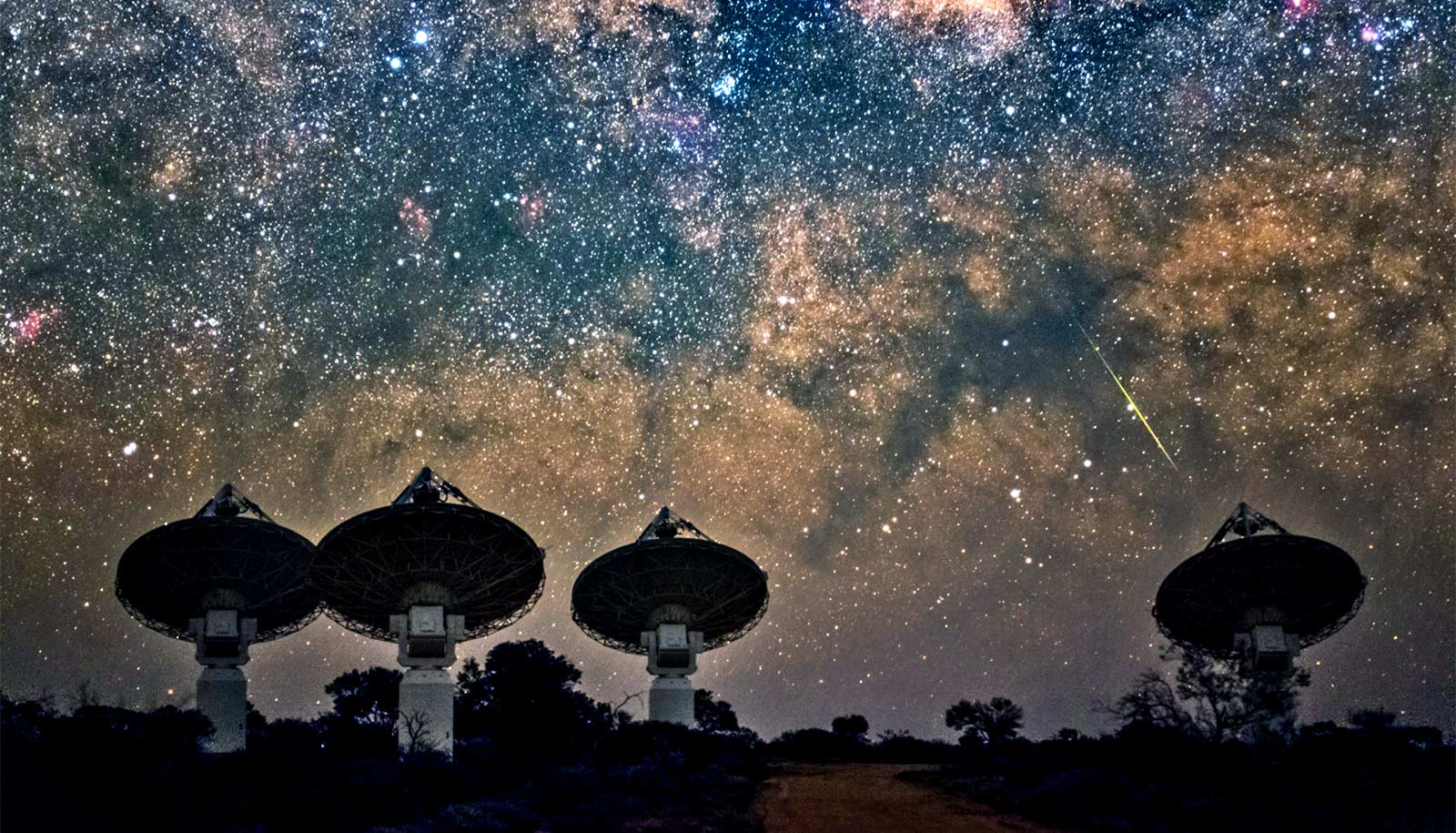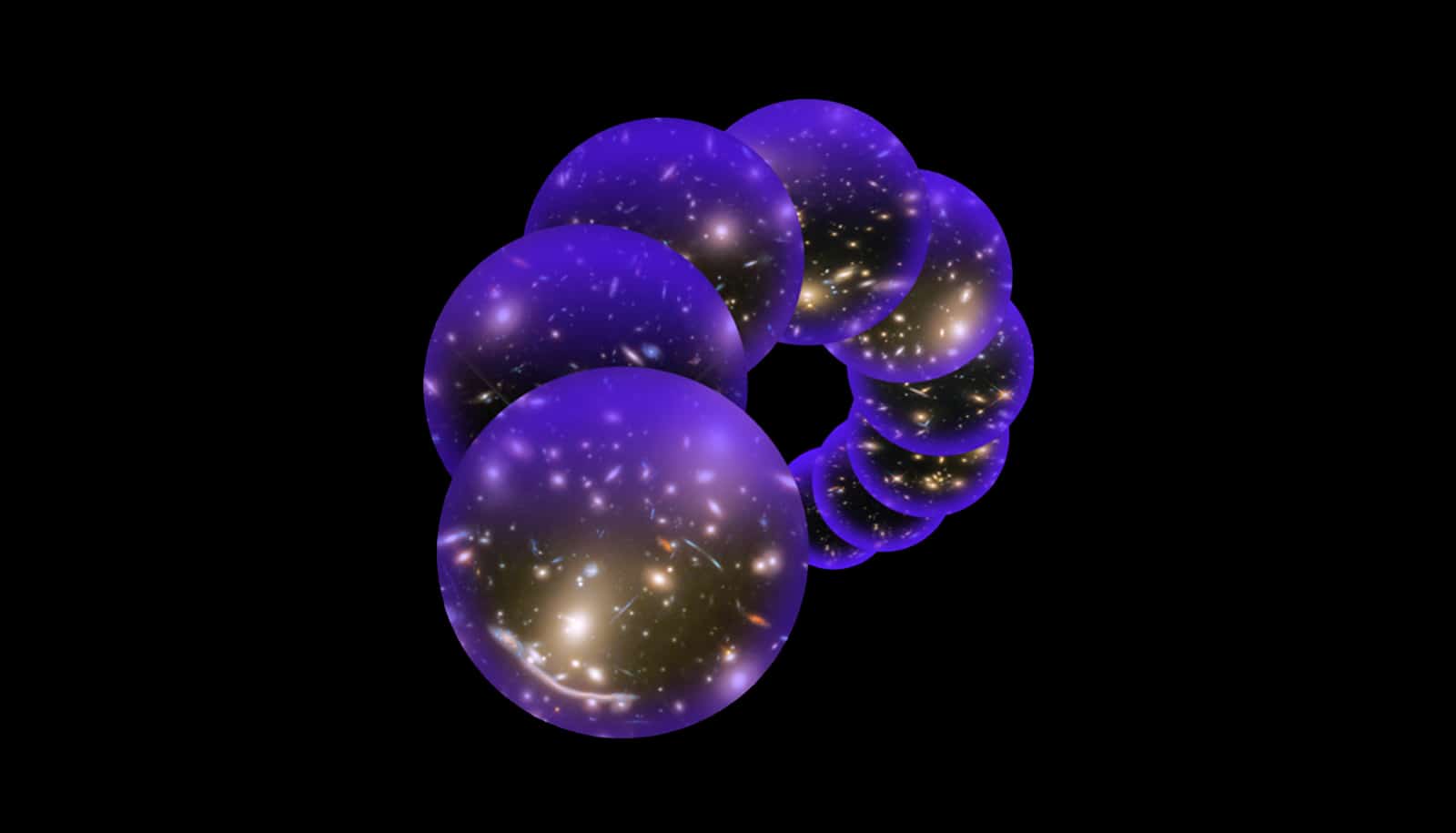Researchers have used fast radio bursts to solve a decades-old mystery of “missing matter”—material long predicted to exist in the universe but never detected—until now.
With this method, the researchers have now found all of the missing “normal” matter in the vast space between stars and galaxies.
The missing matter that the scientists detected is not dark matter, which remains elusive and accounts for about 85% of the total matter in the universe. Instead, the team detected so-called “normal” or baryonic matter—like the protons and neutrons that make up stars, planets, and people. But this missing baryonic matter was not in a location that astronomers can easily study.
“More than 90% of the atoms in the universe are not in galaxies, but in a very dilute phase between galaxies,” says Matthew McQuinn, an assistant professor of astronomy at the University of Washington and coauthor of the new paper in Nature.
“The density of this dilute phase is on average about one electron per cubic meter, compared to the air we breathe, which is more like 10 to the 28th power—a 1 followed by 28 zeros—electrons per cubic meter.”
Where is all the missing matter?
Due to this low density, astronomers had tried and failed for almost 30 years to detect this matter, according to lead author Jean-Pierre Macquart, an associate professor at Curtin University in Perth, Western Australia. But they knew it was out there.
“We know from measurements of the Big Bang how much matter there was in the beginning of the universe,” says Macquart, a scientist with the International Centre for Radio Astronomy Research, also in Australia. “But when we looked out into the present universe, we couldn’t find half of what should be there. It was a bit of an embarrassment.”
The researchers directly detected the missing matter using fast radio bursts—brief flashes of energy that appear to come from random directions in the sky and last for just milliseconds. Scientists don’t yet know what causes them but it must involve incredible energy, equivalent to the amount released by the sun in 80 years. They have been difficult to detect as astronomers don’t know when and where to look for them.
Using fast radio bursts
In order to detect the missing baryonic matter, the researchers had to collect precise data on fast radio bursts. They used the Australian Square Kilometre Array Pathfinder, a radio telescope in Western Australia, to detect fast radio bursts and pinpoint their origins within distant galaxies.
This is the only telescope currently operating that both detects a fast radio burst and determines its galaxy of origin, McQuinn says.
“When the burst arrives at the telescope, it records a live action replay within a fraction of a second,” says coauthor Keith Bannister from the Commonwealth Scientific and Industrial Research Organisation, who designed the pulse capture system used in this research. “This enables the precision to determine the location of the fast radio burst to the width of a human hair held 200 meters [656 feet] away.”
When they found a galaxy that had belched out a burst, the researchers used data from optical telescopes to measure how far away the galaxy is from Earth. Knowing the fast radio burst’s origin and distance allowed the team to then use data on how the burst traveled through the vast, low-density space between galaxies to detect the missing baryonic matter.
“The radiation from fast radio bursts gets spread out by the missing matter in the same way that you see the colors of sunlight being separated in a prism,” says Macquart.
The team only needed six fast radio bursts to detect the missing baryonic matter, Macquart says. In addition, the team pinned down the relationship between how far away a fast radio burst is and how the burst spreads out as it travels through the universe.
With this new technique to detect the previously missing baryonic matter, scientists now want to understand how it is distributed throughout the universe. Observing additional bursts will help them better understand the distribution of matter within these intergalactic regions, providing new information about the invisible structure of the universe, McQuinn says.
“Understanding the locations of this missing matter—such as whether it is around galaxies or far from them—is likely key to understanding how galaxies form and take the shape they have today,” he says.
Additional coauthors are from the University of California, Santa Cruz; the Commonwealth Scientific and Industrial Research Organisation in Australia; Swinburne University of Technology in Melbourne; the International Centre for Radio Astronomy Research; Macquarie University in Sydney; and the Pontificia Universidad Católica de Valparaíso in Chile. The Australian Research Council and the Australian government funded the work.
Source: University of Washington



